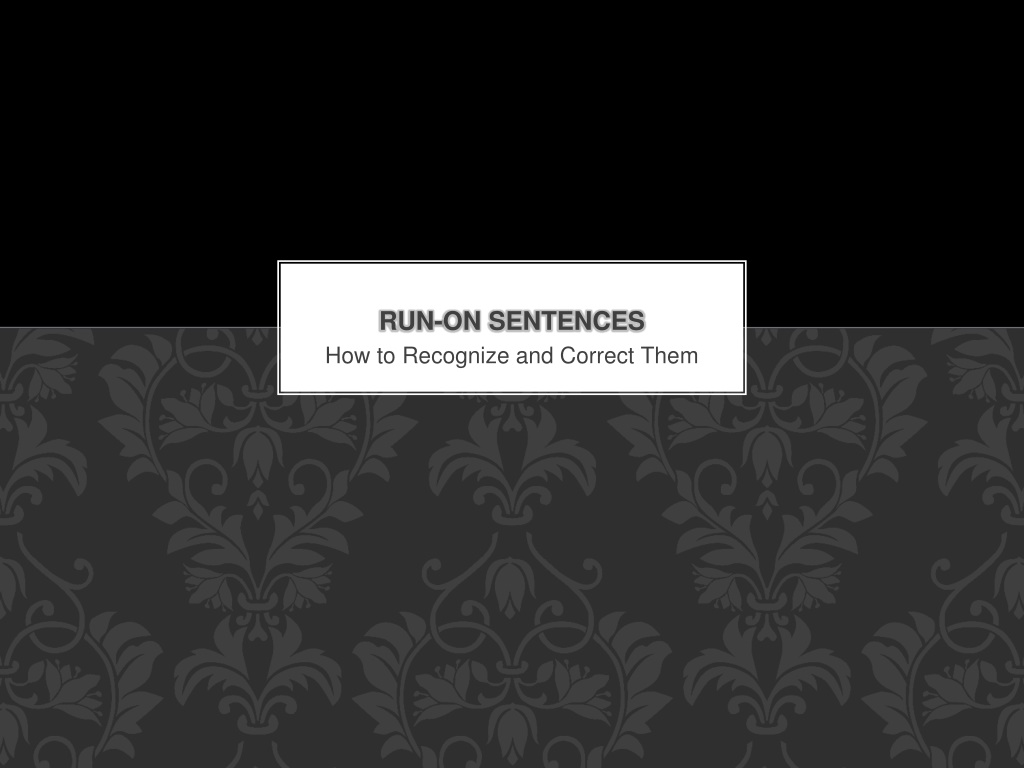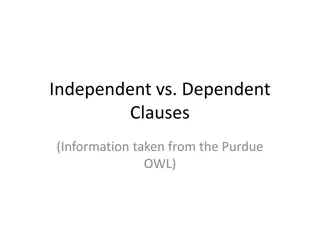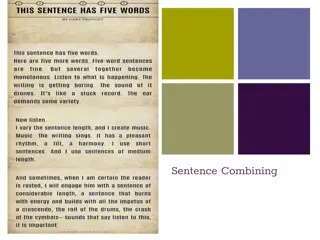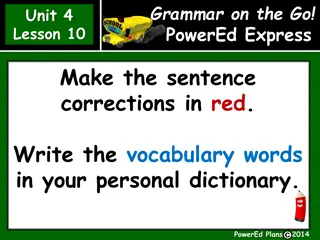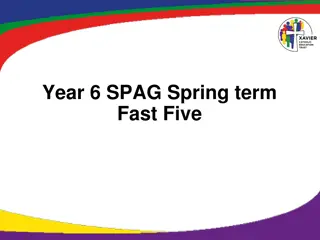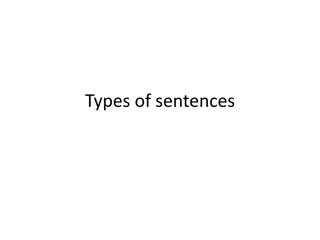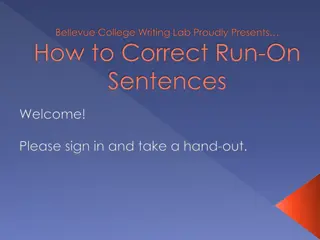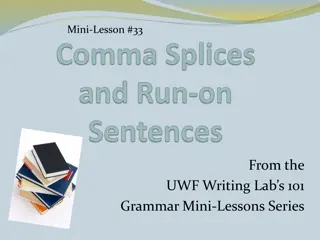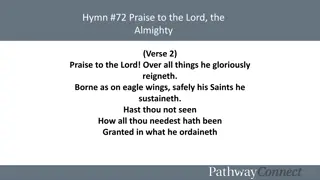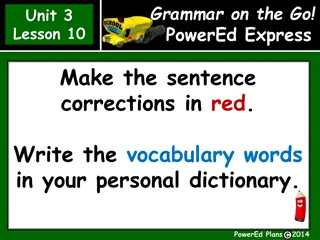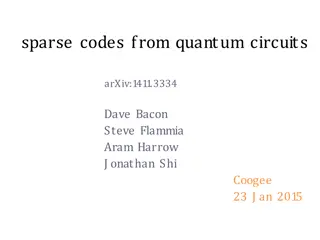Recognizing and Correcting Run-On Sentences
Learn to identify and fix run-on sentences, which occur when two independent clauses are incorrectly joined. Explore the types of run-ons, examples, and methods for correction, including using periods, commas with coordinating conjunctions, and semicolons. Enhance your writing by mastering these techniques.
Download Presentation

Please find below an Image/Link to download the presentation.
The content on the website is provided AS IS for your information and personal use only. It may not be sold, licensed, or shared on other websites without obtaining consent from the author. Download presentation by click this link. If you encounter any issues during the download, it is possible that the publisher has removed the file from their server.
E N D
Presentation Transcript
RUN-ON SENTENCES How to Recognize and Correct Them
WHAT ARE RUN-ONS? A run-on is two independent clauses that are run together without proper punctuation joining them. There are two types of run-ons: Fused Sentences: these run-ons have no punctuation at all to join the clauses together properly. Comma Splices: these run-ons have only a comma to join two clauses together, which is wrong. These tend to be the most common type of run-on.
RUN-ON EXAMPLES Fused Sentence Example: Mario told everyone in the room to be quiet his favorite show was on. Bev s clock radio doesn t work she spilled a glass of soda on it. Comma Splice Examples: The bus stopped suddenly, I spilled coffee all over my shirt. Our class wanted to do something for the earthquake victims, we sent a donation to the Red Cross.
FIXING RUN-ONS There are three methods for fixing run-ons: 1. Use a period and a capital letter to break the two independent clauses into separate sentences. Use a comma and a coordinating conjunction (FANBOYS) to connect to the two clauses. Use a semicolon to connect the two clauses. 2. 3.
METHOD ONE: PERIOD & CAPITAL LETTER Use a period and a capital letter: use this method especially if the clauses are not closely related or if another method would make the sentence too long. Run-On: Vicky has a unique style of dressing she wore a man s tuxedo with a red bowtie to her cousin s wedding. Corrected: Vicky has a unique style of dressing. She wore a man s tuxedo with a red bowtie to her cousin s wedding.
METHOD TWO: COMMA & FANBOYS Use a comma and a coordinating conjunction (FANBOYS): Coordinating conjunctions: for, and, nor, but, or, yet, so Run-On: The library had just closed I couldn t get any reserved books. Corrected: The library had just closed, so I couldn t get any reserved books.
METHOD THREE: SEMICOLON Use a semicolon to connect the two clauses. it looks like a period above a comma (;). it signals more of a pause than a comma but not quite the full pause of a period. it can be used alone or with a conjunctive adverb Semicolon Alone: Run-On: I changed that light bulb just last week now it s blown again. Corrected: I changed that light bulb just last week; now it s blown again.
METHOD THREE: SEMICOLON Semicolon & Conjunctive Adverb & Comma: A comma should always follow the conjunctive adverb though. Run-On: I dread going to parties my husband loves meeting new people. Corrected: I dread going to parties; however, my husband loves meeting new people.
REVIEW: To see if a sentence is a run-on, read it out loud and listen for a break marking two independent clauses. Your voice will probably drop and pause at the break. Correct run-ons by using one of the following methods: Period and capital letter Comma and a coordinating conjunction Semicolon alone OR with a conjunctive adverb
